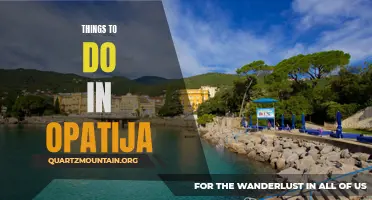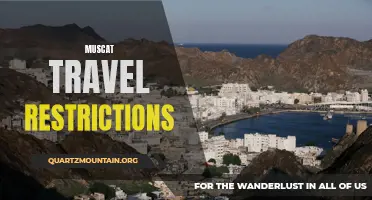
Brescia, a hidden gem in the Lombardy region of Italy, is a city that offers a unique blend of history, culture, and natural beauty. Whether you're a history buff, an art enthusiast, or a nature lover, Brescia has something for everyone. From ancient Roman ruins to stunning cathedrals, picturesque lakes to delicious local cuisine, this city is a destination that should not be missed. In this article, we will explore 10 must-visit attractions and things to do in Brescia, Italy, that will make your trip unforgettable. So pack your bags and get ready for a truly memorable adventure in this enchanting Italian city.
| No | Things to do in Brescia |
|---|---|
| 1 | Visit the Brescia Castle |
| 2 | Explore the Santa Giulia Museum |
| 3 | Take a stroll at the Piazza della Loggia |
| 4 | Visit the Duomo Nuovo Cathedral |
| 5 | Discover the Roman ruins at the Capitoline Temple |
| 6 | Explore the Underground Archaeological Park |
| 7 | Visit the Mille Miglia Museum |
| 8 | Take a walk along the waterfront of Lake Garda |
| 9 | Explore the beautiful Old Town |
| 10 | Enjoy the local cuisine at the city's restaurants |
What You'll Learn

Brescia Castle

| Characteristic | Description |
|---|---|
| Name | Brescia Castle |
| Type | Castle in Brescia, Italy |
| Website | Go to website |
| Rating / Review count | 4.7 / 15,276 |
| Address | Via del Castello, 9, 25121 Brescia BS, Italy |
| Phone | +39 030 240 0640 |
| Hours | Sunday - opens at 8 AM and closes at 8 PM Monday - Closed Tuesday - opens at 8 AM and closes at 8 PM Wednesday - opens at 8 AM and closes at 8 PM Thursday - opens at 8 AM and closes at 8 PM Friday - opens at 8 AM and closes at 8 PM Saturday - opens at 8 AM and closes at 8 PM |
| Profiles |   |
The castle was initially built by the Romans in the 1st century AD as a strategic fortress to defend the region. Over the centuries, it underwent various modifications, particularly during the Middle Ages when it became a stronghold for the ruling Visconti family. They expanded the fortifications, adding towers and walls to make the castle more impregnable.
In the 15th century, Brescia Castle passed into the hands of the Venetian Republic, who further enhanced its defenses. The Venetians added the imposing Torre del Popolo, a tower that served as a prison and a symbol of their authority. It is now one of the most recognizable features of the castle.
During the 16th and 17th centuries, Brescia Castle experienced a period of decline and neglect. However, in the late 19th century, it underwent a significant restoration by architect Rodolfo Vantini. Vantini aimed to recreate the castle's original medieval appearance, demolishing some newer structures and restoring the original walls and towers.
Today, Brescia Castle stands as an impressive example of medieval architecture and offers visitors a chance to step back in time. The castle's massive walls and towers provide breathtaking views of the city and the surrounding landscapes. Inside, several rooms have been restored and turned into museums, showcasing archaeological finds, historical artifacts, and art collections.
One of the most significant attractions within the castle is the Arms Museum, which displays a vast collection of weapons and armor from various periods. Visitors can admire suits of armor, swords, crossbows, and firearms, offering a glimpse into Brescia's military history.
Another notable feature is the museum dedicated to ancient and medieval Brescia. Here, visitors can explore the city's past through archaeological finds, including pottery, jewelry, and sculptures, dating back thousands of years. The museum also houses a replica of one of the most famous artifacts discovered in Brescia - the Bronze Age "Diadeum," a ceremonial crown.
The castle also hosts various cultural events throughout the year, including exhibitions, concerts, and theatrical performances. These events bring the castle to life, creating a vibrant atmosphere that combines history and contemporary culture.
12 Must-Do Activities in Noumea, New Caledonia.
You may want to see also

Piazza del Duomo

| Characteristic | Description |
|---|---|
| Name | Paul VI Square |
| Type | Historical landmark in Brescia, Italy |
| Rating / Review count | 4.8 / 373 |
| Address | P.za Paolo VI, 25121 Brescia BS, Italy |
| Hours | Sunday - Open 24 hours Monday - Open 24 hours Tuesday - Open 24 hours Wednesday - Open 24 hours Thursday - Open 24 hours Friday - Open 24 hours Saturday - Open 24 hours |
The Piazza del Duomo is surrounded by several stunning buildings, each with its own unique charm. To the east of the square stands the Broletto, a medieval palace that now houses the Municipality of Brescia. This beautiful structure is adorned with intricate gothic-style windows and arches, making it a must-see for architecture enthusiasts.
To the south of the square is the impressive Palazzo della Loggia, a Renaissance-style palace that dates back to the 16th century. Its elegant façade features a stunning loggia with columns, making it one of the most iconic buildings in Brescia. Today, the Palazzo della Loggia serves as the seat of the city council of Brescia.
In the center of the square, you'll find a fountain surrounded by a garden filled with colorful flowers and greenery. This peaceful oasis offers a nice spot to take a break and enjoy the beauty of the surroundings. The vibrant atmosphere of the Piazza del Duomo is enhanced by the presence of numerous cafes and restaurants, where visitors can relax and savor the local cuisine.
The Piazza del Duomo is not just a beautiful square; it is also a place where history comes alive. The square has witnessed various historical events throughout the centuries and has even been the site of important political and social gatherings. Today, it continues to be a vibrant hub of activity, attracting both locals and tourists alike.
Visiting Piazza del Duomo is like stepping back in time, as it retains its medieval charm while providing modern amenities. Its central location makes it easily accessible by foot, and it is also well-connected to other parts of the city by public transportation.
Whether you're a history buff, an architecture enthusiast, or simply looking for a nice place to relax and soak in the atmosphere, Piazza del Duomo in Brescia is a must-visit destination. Its rich history, stunning architecture, and lively ambiance make it a true gem in the heart of the city.
14 Fun Activities to Enjoy in East Grand Rapids
You may want to see also

Santa Giulia Museum

| Characteristic | Description |
|---|---|
| Name | Santa Giulia Museum |
| Type | Archaeological museum |
| Website | Go to website |
| Rating / Review count | 4.7 / 5,196 |
| Address | Via dei Musei, 81, 25121 Brescia BS, Italy |
| Phone | +39 030 297 7833 |
| Profiles |  |
Brescia is a beautiful city located in the Lombardy region of northern Italy. It is known for its rich history, stunning architecture, and vibrant culture. One of the must-visit attractions in Brescia is the Santa Giulia Museum.
As you enter the museum, you will be greeted by the breathtaking beauty of the monastery's architecture. The cloister, with its elegant columns and intricately designed arches, sets the tone for the rest of the museum. The museum is divided into different sections, each highlighting a specific period in history.
One of the highlights of the museum is the Roman section, which houses a vast collection of Roman artifacts. You can see beautifully preserved mosaics, statues, and everyday objects that offer a glimpse into the lives of the people who lived in Brescia during ancient times. The museum also houses a collection of Lombard and Longobard artifacts, which provide valuable insights into the Lombard civilization.
Another impressive section of the museum is the Renaissance section, which showcases masterpieces from the 15th and 16th centuries. Here, you can admire works of art by renowned artists such as Raphael, Caravaggio, and Moretto. The collection includes paintings, sculptures, and decorative arts that demonstrate the artistic richness of Brescia during the Renaissance period.
In addition to its impressive collection, the Santa Giulia Museum also offers various educational programs and temporary exhibitions. These programs aim to engage visitors of all ages and provide them with a deeper understanding of the history and art of Brescia.
When visiting the Santa Giulia Museum, make sure to take your time exploring all the different sections. Each section offers a unique experience and is filled with treasures waiting to be discovered. Whether you are a history enthusiast, an art lover, or simply looking to immerse yourself in Brescia's culture, the Santa Giulia Museum is a must-visit destination.
In conclusion, the Santa Giulia Museum is a true gem in the heart of Brescia. Its extensive collection of artifacts and stunning architecture make it a must-visit attraction for anyone visiting the city. Whether you are interested in history, art, or simply want to immerse yourself in the cultural heritage of Brescia, the Santa Giulia Museum offers a truly unforgettable experience.
So, next time you find yourself in Brescia, don't miss the opportunity to visit the Santa Giulia Museum. You will be captivated by its beauty, intrigued by its history, and inspired by its art.
12 Fun Things to Do in Palm Coast, Florida
You may want to see also

Roman Forum

| Characteristic | Description |
|---|---|
| Name | Capitolium o Tempio Capitolino |
| Type | Archaeological museum |
| Website | Go to website |
| Rating / Review count | 4.7 / 3,435 |
| Address | Via dei Musei, 55, 25121 Brescia BS, Italy |
| Phone | +39 030 297 7833 |
The Roman Forum, located in the city of Brescia, Italy, is one of the most significant archaeological sites in the region. It is a reminder of the city's ancient past and its ties to the Roman Empire.
The Roman Forum in Brescia was originally built in the 1st century AD, during the reign of the Roman Emperor Vespasian. It served as the political, economic, and social center of the city, much like ancient forums in other Roman cities. The forum was a focal point for the citizens of Brescia, where they would gather for political discussions, commercial activities, and social interactions.
The Forum was a large open space surrounded by important buildings and monuments. It was a rectangular area, measuring about 130 meters long and 80 meters wide. The layout of the forum followed the traditional Roman design, with a central square flanked by porticoes on all sides. The porticoes provided shade and shelter, creating a comfortable space for citizens to gather.
One of the most notable structures in the Roman Forum was the Capitolium, a temple dedicated to the Capitoline Triad, the three supreme deities of the Roman religion – Jupiter, Juno, and Minerva. The Capitolium was a grand and impressive building, constructed with marble and adorned with intricate sculptures and reliefs. It was a symbol of the city's prosperity and its dedication to the gods.
The Forum also housed other important buildings, such as the Basilica, which served as a meeting place for legal, commercial, and administrative matters. The Basilica was a large hall with a central nave and side aisles, supported by rows of columns. It was a space where citizens could seek justice, conduct business, and resolve disputes.
In addition to the Capitolium and the Basilica, there were several other smaller structures and monuments in the Roman Forum. These included various temples, markets, and public fountains. The forum was a vibrant and bustling place, full of activity and energy.
Over the centuries, the Roman Forum in Brescia fell into disrepair and was gradually abandoned. Its stones were reused in other constructions, and the site was forgotten. It was not until the late 19th century that the forum was rediscovered and archaeologists began excavating and restoring the site.
Today, the Roman Forum in Brescia is a popular tourist attraction, offering visitors a glimpse into the city's ancient past. The ruins of the Capitolium, Basilica, and other structures have been partially restored, allowing visitors to imagine the grandeur and significance of the once-thriving center of Roman life.
The Roman Forum in Brescia is a testament to the city's rich history and its connection with the Roman Empire. It stands as a reminder of the importance of the forum in ancient Roman society and the role it played in shaping the city's identity. Visiting the Roman Forum is like stepping back in time and experiencing the glory of ancient Brescia.
12 Fun Things to Do in Oak Bluffs, Massachusetts
You may want to see also

Brescia Underground

The Roman Empire recognized the strategic location of Brescia and established a military camp in the area. The tunnels served as a way to move soldiers and supplies discreetly throughout the city. Over time, the tunnels expanded and were utilized for various purposes, including storage and transportation.
During the Middle Ages, Brescia became a thriving city and the tunnels played a crucial role in its economic growth. Merchants used the underground passages to transport goods, while workshops were set up in the tunnels to produce various items. This underground network became known as the "Brescia Underground."
One of the most interesting aspects of Brescia Underground is the presence of archaeological remains from different time periods. As the city above expanded and modernized, many structures and artifacts were buried. As a result, the tunnels are now home to a treasure trove of historical artifacts, including Roman mosaics, medieval pottery, and even remnants of World War II.
In recent years, Brescia Underground has been opened to the public for guided tours. These tours provide an opportunity for visitors to explore the fascinating history and architecture of the tunnels. The tours often include visits to underground churches, medieval cisterns, and hidden passageways.
Exploring Brescia Underground gives visitors a unique perspective on the city's history and allows them to appreciate the ingenuity of the people who built these tunnels. It is a testament to the resourcefulness and engineering skills of the past, and a must-visit attraction for history enthusiasts.
Overall, Brescia Underground offers a captivating glimpse into the history of Brescia and the people who lived there. The network of tunnels provides a fascinating journey through time, showcasing the city's rich heritage from Roman times to the present day. Whether you are interested in archaeology, architecture, or simply love history, a visit to Brescia Underground is a truly unforgettable experience.
13 Exciting Things to Do Near Kemah Boardwalk
You may want to see also

Duomo Vecchio

| Characteristic | Description |
|---|---|
| Name | Old Cathedral |
| Type | Cathedral in Brescia, Italy |
| Website | Go to website |
| Rating / Review count | 4.8 / 1,526 |
| Address | P.za Paolo VI, 25121 Brescia BS, Italy |
| Hours | Sunday - 9:30–10:45 AM, 2:30–5:45 PM Monday - 9:30–11:45 AM, 2:30–5:45 PM Tuesday - 9:30–11:45 AM, 2:30–5:45 PM Wednesday - 9:30–11:45 AM, 2:30–5:45 PM Thursday - 9:30–11:45 AM, 2:30–5:45 PM Friday - 9:30–11:45 AM, 2:30–5:45 PM Saturday - 9:30–11:45 AM, 2:30–5:45 PM |
The city of Brescia, located in the Lombardy region of northern Italy, is known for its rich history and beautiful architecture. One of the most famous landmarks in Brescia is the Duomo Vecchio, also known as the Old Cathedral.
The Duomo Vecchio is a Romanesque-style cathedral that dates back to the 11th century. It is located in the historical center of Brescia and is a prominent feature of the city's skyline. The cathedral is dedicated to Santa Maria Assunta, or the Assumption of Mary.
The exterior of the Duomo Vecchio is characterized by its impressive bell tower, which stands at over 70 meters tall. The tower is adorned with intricate carvings and features several bells, which were historically rung to announce important events or religious services. The façade of the cathedral is decorated with beautiful sculptures and reliefs, depicting biblical scenes and saints.
Inside the Duomo Vecchio, visitors can admire a variety of stunning artworks and architectural elements. The main nave is adorned with colorful frescoes, depicting scenes from the life of Christ and the Virgin Mary. The cathedral also houses several chapels, each dedicated to a different saint or religious figure.
One of the most notable features of the Duomo Vecchio is its crypt, which is located beneath the main altar. The crypt is home to the remains of San Filastrio, the patron saint of Brescia, as well as several other important religious figures. The crypt is adorned with beautiful mosaics and is considered a sacred space for prayer and contemplation.
The Duomo Vecchio is not only a place of worship but also an important cultural and historical landmark. It has witnessed numerous events throughout its long history and has been the site of coronations and important religious ceremonies. Today, it continues to be a popular destination for visitors from around the world who come to admire its beauty and learn about its historical significance.
In addition to its architectural and artistic value, the Duomo Vecchio also offers stunning panoramic views of the city of Brescia. Visitors can climb to the top of the bell tower and enjoy breathtaking views of the surrounding landscape, including the nearby hills and the picturesque old town.
Overall, the Duomo Vecchio is a must-visit attraction for anyone interested in history, art, and architecture. With its rich history, breathtaking beauty, and cultural significance, it is a true gem of Brescia.
14 Affordable Things to Do in Katy to Make the Most of Your Budget!
You may want to see also

Torre della Pallata

| Characteristic | Description |
|---|---|
| Name | Torre della Pallata |
| Type | Tower in Brescia, Italy |
| Website | Go to website |
| Rating / Review count | 4.4 / 5 |
| Address | Via della Pace, 25122 Brescia BS, Italy |
The Torre della Pallata, also known as the Tower of Pallata, is a historic tower located in the city of Brescia, Italy. Situated in the heart of the city, this tower stands tall as a testament to Brescia's rich history and cultural heritage.
Constructed in the 12th century, the Torre della Pallata served as a defensive structure during a time when Brescia was under constant threat of invasion. The tower was strategically built near the city walls, providing a vantage point for spotting potential enemies and defending the city. Its solid stone construction and formidable height made it a formidable fortress.
Over the years, the Torre della Pallata has witnessed many significant events and has been involved in countless historical episodes. It has survived various conflicts and conquests, including the Napoleonic invasion in the late 18th century, which saw Brescia become part of the French Empire. Despite the turbulent times, the tower has managed to stand firm and retain its original appearance.
The Torre della Pallata has undergone several renovations and restorations throughout its existence. The most recent restoration in the late 20th century aimed to preserve the tower's original structure while ensuring its stability and safety. Today, the tower stands proud as a symbol of Brescia's historical significance and architectural prowess.
Visitors to Brescia can marvel at the Torre della Pallata and explore its rich history. The tower offers panoramic views of the cityscape, allowing visitors to take in the breathtaking sights of Brescia and its surrounding areas. The tower also serves as a cultural and educational center, hosting various exhibitions and events that showcase the city's heritage.
In addition to its historical and cultural value, the Torre della Pallata is a popular destination for tourists and locals alike. Its central location makes it easily accessible, and its intriguing history makes it a must-visit attraction. Whether you are a history buff or simply looking to immerse yourself in the beauty of Brescia, the Torre della Pallata is a place worth exploring.
Overall, the Torre della Pallata is a captivating testament to Brescia's past. Its grandeur and significance make it an essential part of the city's cultural landscape. A visit to this historic tower is not only a journey through time but also an opportunity to appreciate the resilience and architectural brilliance of Brescia.
14 Fun Things to Do in Grand Bahamas
You may want to see also

Mille Miglia Museum

| Characteristic | Description |
|---|---|
| Name | Museo Mille Miglia |
| Type | Museum in Brescia, Italy |
| Website | Go to website |
| Rating / Review count | 4.5 / 2,113 |
| Address | Viale della Bornata, 123, 25135 Sant'Eufemia della Fonte BS, Italy |
| Phone | +39 030 336 5631 |
| Profiles |   |
Brescia is a city located in the Lombardy region of northern Italy. It is known for its rich history, beautiful architecture, and vibrant cultural scene. One of the city's most popular attractions is the Mille Miglia Museum, which showcases the history and heritage of the famous Mille Miglia race.
The Mille Miglia was an endurance race that took place in Italy from 1927 to 1957. It was one of the most prestigious and challenging races of its time, attracting top drivers and iconic car brands. The race covered a distance of 1,000 miles (hence the name) and took drivers from Brescia to Rome and back.
The Mille Miglia Museum is dedicated to preserving the memory of this legendary race. Located in an old monastery in the heart of Brescia, the museum houses a vast collection of race cars, photographs, and memorabilia. Visitors can explore the history of the race through interactive exhibits, multimedia presentations, and guided tours.
One of the highlights of the museum is its collection of vintage cars. From classic Alfa Romeos to sleek Ferraris, the museum showcases a wide variety of vehicles that participated in the Mille Miglia. Visitors can admire these beautiful machines up close and learn about their racing history.
The museum also features a section dedicated to the drivers who took part in the race. Here, you can discover the stories of famous racers such as Tazio Nuvolari and Stirling Moss, who achieved legendary status in the world of motorsport. The museum commemorates their achievements and pays tribute to their contributions to the Mille Miglia.
In addition to the permanent exhibits, the museum hosts temporary exhibitions and events related to automotive culture and history. These special exhibitions provide visitors with the opportunity to explore different aspects of the world of racing and expand their knowledge of the Mille Miglia.
Visiting the Mille Miglia Museum is a must for any car enthusiast or history buff. The museum offers a fascinating journey through the golden age of motorsport and provides a unique insight into the passion and dedication of the drivers and organizers of the Mille Miglia. Whether you are a fan of classic cars or simply interested in Italian culture, a visit to this museum will not disappoint.
12 Exciting Activities to Try When Your Braces Come Off
You may want to see also

Tito Speri Museum

The Tito Speri Museum is a historical museum located in Brescia, Italy. It is dedicated to the life and legacy of Tito Speri, an Italian patriot and hero of the Risorgimento movement.
The museum is housed in a building that was once the home of Tito Speri himself. Born in Brescia in 1813, Speri played a crucial role in the fight for Italian independence and unity. He was actively involved in the Five Days of Milan, a major uprising that took place in 1848 against Austrian rule. Speri was captured by the Austrians and executed in Brescia in 1853.
The Tito Speri Museum showcases various artifacts and documents related to Speri's life and the Risorgimento movement. Visitors can explore the various rooms of the museum, which are filled with historical displays and memorabilia. The museum also features interactive exhibits that allow visitors to learn more about the political and social context of Speri's time.
One of the highlights of the museum is Speri's study, which has been recreated to resemble its original state. Here, visitors can get a glimpse into the personal life of this patriotic figure and gain insights into his thoughts and motivations. The study is filled with books, manuscripts, and personal belongings that provide a sense of the intellectual and emotional world of Speri.
In addition to the main exhibition, the Tito Speri Museum also hosts temporary exhibitions and cultural events related to the Risorgimento period. These events include lectures, workshops, and performances that aim to promote a deeper understanding of this important period in Italian history. The museum is committed to preserving and promoting the legacy of Tito Speri and the Risorgimento movement.
The Tito Speri Museum is an important cultural institution in Brescia, offering visitors a unique opportunity to learn about the life and contributions of this local hero. Whether you are a history enthusiast or just curious to learn more about Italian history, a visit to the Tito Speri Museum is highly recommended.
10 Fun Activities to Explore in New London, CT this Weekend
You may want to see also

Monte Isola (an island on Lake Iseo)
_20230702112700.webp)
| Characteristic | Description |
|---|---|
| Name | Monte Isola |
| Type | Island in Italy |
| Rating / Review count | 4.7 / 460 |
Located in the Lombardy region of Italy, Brescia is a charming city that offers a rich history and cultural heritage. One of the must-visit attractions in the area is Monte Isola, an island situated in Lake Iseo. Monte Isola is not only the largest lake island in Italy but also one of the most picturesque destinations in the region.
Accessible by boat, Monte Isola is a haven for nature lovers and those looking for a peaceful retreat. The island is a car-free zone, which means visitors can explore its quaint streets and traditional villages on foot or by bicycle. The lack of traffic and noise pollution adds to the island's serene and tranquil atmosphere.
Monte Isola's landscape is characterized by lush greenery, olive groves, and vineyards, offering visitors a taste of the authentic Italian countryside. The island is also dotted with beautiful churches and historical sites, showcasing its rich and diverse history.
One of the highlights of Monte Isola is the walk to the top of the island, where visitors can enjoy panoramic views of Lake Iseo and the surrounding mountains. The hike takes approximately two hours and is relatively easy, suitable for people of all ages and fitness levels. Along the way, there are several spots to rest and admire the breathtaking scenery.
The island's main village, Peschiera Maraglio, is a delightful place to explore. Its narrow streets are lined with colorful houses, quaint shops, and traditional restaurants serving local delicacies. One of the island's specialties is sardines, which are often grilled and served with polenta. Visitors can also indulge in the island's famous olive oil, which is produced using traditional methods.
For those seeking cultural experiences, Monte Isola hosts several events throughout the year, including religious festivals and art exhibitions. The island is also known for its traditional fishing techniques, and visitors have the opportunity to witness these techniques firsthand.
In conclusion, Monte Isola is a hidden gem in the Lombardy region of Italy. With its car-free streets, natural beauty, and rich history, the island provides a unique and unforgettable experience for visitors. Whether you're looking for a peaceful retreat or an adventure exploring the great outdoors, Monte Isola and its surrounding area offer something for everyone.
12 Fun Activities to Experience in Union City, Georgia
You may want to see also
Frequently asked questions
Brescia offers a range of popular tourist attractions that cater to various interests. One must-visit attraction is the Brescia Castle, also known as the Falcon of Italy. It offers breathtaking views of the city and houses the Musoleo Capitolino, an archaeological museum. Another popular site is the Santa Giulia Museum, a UNESCO World Heritage Site, which showcases an impressive collection of Roman artifacts. Additionally, the historic city center of Brescia is filled with beautiful architecture, charming streets, and bustling piazzas, making it a delightful place to explore.
Absolutely! Brescia is surrounded by picturesque natural landscapes that offer ample opportunities for outdoor activities. Lake Garda, located just a short drive away, is a popular destination for water sports enthusiasts, offering activities such as sailing, windsurfing, and kayaking. The nearby Prealps offer hiking and biking trails for those wanting to explore the stunning countryside. Additionally, Brescia is known for its stunning vineyards and wineries, where visitors can take part in wine tasting tours and enjoy the beauty of the Italian countryside.
Brescia is a lively city with a thriving cultural scene, offering a variety of cultural events throughout the year. One major event is the Mille Miglia, an iconic vintage car race that takes place in Brescia every May, attracting car enthusiasts from around the world. In the summer, the city hosts the Brescia Music Festival, which showcases a wide range of musical performances, including classical, jazz, and contemporary music. Additionally, Brescia has a rich tradition of theater and opera, with several theaters and opera houses offering performances throughout the year. Visitors can also enjoy the numerous art exhibitions and cultural festivals that take place in the city.








5 Comments
Rahul Green
Michaela Krajanova
AuthorLucas Henderson
Karli Trujillo
AuthorChad Graves